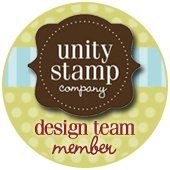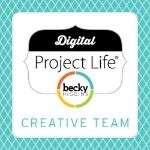Sew! Yes you can! If you’re a digital crafter, anything is possible.
Crate Paper’s Fourteen, the full collection, became available at acdigitals.com and I’ve been over the moon about it. One of my all-time favorite lines. Who can blame me? I was compelled to make something my 9-year-old-daughter would swoon over. Trying to keep her warm is one of my biggest concerns right now. It’s January after all. I came across this tutorial and decided to make it happen using Fourteen, fleece, and PhotoFabric.
Pockets added to a scarf—brilliant for so many reasons—hands, gadgets, notes, little stuffed critters to nestle in there. Look at the smile on her face—she’s using her new scarf to warm her hands AND hold an iPod. Plus, she got to pick out the prints from a computer screen. Sew on!
Here are a few tidbits to help get you on your way to making a pocket scarf for your little girl:
In this project, I used PhotoFabric as the vessel between digital product and the real world of fabric. What is that, you ask?PhotoFabric is a paper-backed fabric for use with inkjet printers. It’s sold on a roll sized, 8-1/2-x-120-inches! You can cut as much or as little from the roll as you need. Usually, I cut 8-1/2-x-11-inch sheets to print. To make this easier, I have a piece of chipboard sized at 8-1/2-x-11-inches that I use as a template to measure. Certainly you can use a ruler but I find this template is easier to use.
By the way, I like to use the Cotton Twill PhotoFabric.
In Photoshop Elements, I created three 8-1/2-x-11-inch documents and filled them with squares of Crate Paper’s Fourteen (with the help from Gwen, of course, they were her prints to choose after all). There were three squares on each side, for a total of 6 squares per document, 18 squares in all. Side Note: If I plan to make one for me, I might fill the documents with strips instead (which would make the final scarf wider to accommodate an adult), ooh future project!
I then cut three 8-1/2-x-11-inch pieces of PhotoFabric. Because PhotoFabric is stored on a roll, it may have a tendency to curl, so I pressed the sheets down to make them flat and trimmed any stray threads with scissors. PhotoFabric provides a sheet with tips to printing on their product. Using this sheet as a guide, I changed my printer settings appropriately. I own a printer (HP Photosmart B8550)that gives me the option to select borderless and am able to select a custom size for my projects. This helps me get the most available space on PhotoFabric. I want to fill that stuff, edge to edge, if possible.
Once printed, I let them dry for at least a half hour before sewing. Sometimes I will print a project out the night before and let it sit overnight. This is the point that I tend to vary from PhotoFabric directions. You’re supposed to peel away the PhotoFabric backing and rinse the PhotoFabric under cold water BEFORE sewing. I’ve found my prints maintain their integrity and it’s easier to sew my projects if I do this a week or two AFTER I’ve sewn my project. I suggest you do this.
I then cut my fabric in half lengthwise, each piece approximately 4-1/4-x-11-inches, and surged them together to make one long piece for the printed part of the scarf. Each short end of this long piece was pressed under and sewn, to finish the ends.
Using one of Gwen’s other fleece scarves as a guide, I measured the length of the fringe at the ends, which was approximately 6-inches. In my fabric stash, I had some off-white fleece which I used as the backing/fringe of the scarf. To figure out how much I needed, I measured the big long printed piece, added the 6-inches for fringe, and approximately 4-1/4-inches for the size of the pockets, plus an inch or two. I cut my pocket pieces which were sized 4-1/4 inches (square). I surged the tops and bottoms to finish the pocket pieces. Whew! Almost done.
I then pinned the printed piece to the middle of the long piece of fleece, pinned the pockets at each end, being sure to measure for the fringe at each end, and surged the long left and right sides of the pinned project. I top stitched all around the printed piece and the pockets with red embroidery thread.
Lastly, using scissors, I cut the fleece from each ends to make fringe. Yay! Finished!
I hope some of this information helps you make your little girl a pocket scarf using digital product. I was so caught up in the moment, I didn’t even think to take pictures for this project, but again, here’s a link to the project that originally inspired me: http://themuddyprincess.blogspot.com/2010/09/fleece-pocket-scarf.html














No comments:
Post a Comment